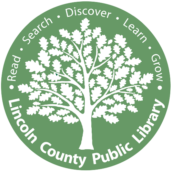This collection began with the Kentucky Oral History Commission’s effort to establish oral history programs in each of the state’s 120 counties. County libraries worked with local volunteers to collect interviews. Since 1987, county oral histories have been generated primarily by recipients of technical assistance grants from the commission that provide training and equipment to volunteer interviewers. Interviews donated by independent researchers are also included. Original collection held at Kentucky Oral History Commission/Kentucky Historical Society Access copies available at Lincoln County Public Library. Authorization must by granted by KHS to use or publish by any means the archival material to which the Society holds copyright.
LINCOLN COUNTY ORAL HISTORY INTERVIEWS
FRANK JOHNSON INTERVIEWED BY ELSIE MATHENY
March 22, 1977
Ms. Matheny: The following is an unrehearsed interview of Mr. Frank Johnson of Crab Orchard, Kentucky, with Mrs. Elsie C. Matheny, interviewer, in Stanford, for the Kentucky Bicentennial Oral Project, on March 22, 1977 at one o’clock. Frank, it’s my understanding that you have some very interesting information and knowledge concerning the education of the black people in Lincoln County. Would you like to just to tell us, in your own words, some of your early experiences?
Mr. Johnson: These schools…the black schools of Lincoln County have gone…I remember back as far as 1870, because my father and mother attended those schools in Lincoln County. There were two black districts, and at this…at the time I started teaching in Crab Orchard…one called Crab Orchard District D (sic), the other, White Oak District A (sic). Now, these were sub-districts…we were sub-districts. Then there was another district about three miles and a half northeast of Crab Orchard, known as the Cedar Ridge District.
Ms. Matheny: Now, Frank, these were all black schools?
Mr. Johnson: That’s right.
Ms. Matheny: Schools for the black children?
Mr. Johnson: Yes; now, at the Cedar Ridge School…I attended that school myself years ago. Just before I began teaching in the Crab Orchard District, the Board consolidated the Cedar Ridge School with the Crab Orchard District D. Now, they…before then, the children walked to school in Crab Orchard, although Cedar Ridge was quite a distance. Some walked way over in the Deep Well Woods District from the Cedar Ridge School.
Ms. Matheny: Now, how did they get to the Crab Orchard School after they consolidated?
Mr. Johnson: After they were consolidated with Crab Orchard School, they were transported by some of its patrons. They used at first we might say a homemade vehicle. The first patron was Mr. Sam McRoberts. He made a two horse hack with part of a horse drawn hearse.
Ms. Matheny: Well, that’s very interesting.
Mr. Johnson: Later, Mr. Oliver Campbell and Mr. Abraham Campbell both used the same old hack that Mr. McRoberts used. Well, it drove for several years, then Mr. Johnny Stephenson began to transport the Cedar Ridge children in a large automobile. Then the last part of this teaching period, I was transferred to the White Oak sub-district. I stayed there for about seven years. I was then transferred again with the White Oak children, back to the Crab Orchard District, with the Cedar Ridge children there too. Then….
Ms. Matheny: Now, how many teachers were in your school at that time?
Mr. Johnson: They finally supplied another teacher; Mrs. Thelma Gray…we took…who took the lower grades. In fact, the school was turned into a two room affair, and there was a little break in my teaching at this…in this way. During this period, Mr. Oliver Campbell and Johnny Stephenson transported the Cedar Ridge children, first by regular automobile, then by homemade bus. Now, I’d like to speak to…relate just a few more items about my last 19 years of school work.
Ms. Matheny: Now, before you get into that, Frank, let me ask you; then you might say that the black children from Cedar Ridge to Crab Orchard rode the first school bus in Lincoln County. That’s right, isn’t it?
Mr. Johnson: Yeah.
Ms. Matheny: Okay, well, that is real interesting to know that this is the first school bus in Lincoln County and was driven and ridden by the black children of the Cedar Ridge District.
Mr. Johnson: That’s right.
Ms. Matheny: Okay; now, tell me some more about your work in Lincoln County.
Mr. Johnson: Now, let me relate a few more items about my last 19 years of school work. I put in 15 years with a large body of school children in the one room school in Boneyville. And, I returned to old Lincoln High to spend three last years of regular teaching, although I had been principal that one year, I taught these last years…I taught these last three years in the grades. And, during this time, this last regular black bus driver from Crab Orchard was William Bright, he finished his driving from Crab Orchard District to Lincoln High in 1964. I taught 15 years in the Crab Orchard District, four years in Lincoln High School District and 15 years in the Boneyville District.
Ms. Matheny: That gave you a pretty good knowledge of the various areas around Stanford and Crab Orchard.
Mr. Johnson: That’s right.
Ms. Matheny: Well, did this conclude your work in the school system of Lincoln County?
Mr. Johnson: Well, after I had retired, I then began to substitute in the Everly (sic) District in Crab Orchard and the other schools around the county.
Ms. Matheny: Well, I think that is very interesting, and I think this information is something that not everybody has. So, we thank you very much for this interview concerning the early black education in the Crab Orchard area, particularly, and the first school bus that was used in Lincoln County.
Mr. Johnson: I really have enjoyed working with the integrated system (sic) and learning more and more about people as a whole.
Ms. Matheny: Thank you very much. This has been very informative.
END OF INTERVIEW
